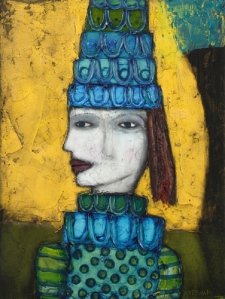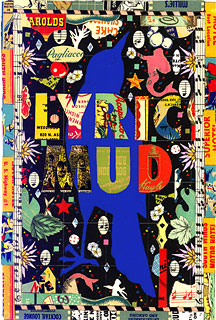What has always fascinated me about jazz is that my identity as an improviser is unconditionally bound to the identity of those I am improvising with. By identity I mean what Heidegger would refer to as Dasein- the manifestation of my potential to “be” in the world.
Jazz is a music that is phenomenological in this regard. It is always a manifestation of the moment. We begin with a simple shared construct that is fully defined- an event that has been completed and stands in the present as a link to the past. A tune- a logic of melody, harmony and rhythm that is fixed. Through its aesthetic its implications reach in both directions. Its design and logic evoke the essence of the time in which it was constructed by engaging us (who reside in the future) in some degree of the “truth” of what it meant to “be” at the time of its creation. Take for example the lyric to the jazz standard These Foolish Things Remind Me Of You the line “The winds of march that make my heart a dancer, a telephone that rings but whose to answer, a playgrounds painted swings, these foolish things remind me of you.” This lyric is so filled with the suggestion of change- winds of March, an unanswered phone call, the image of childhood lost- all culminating in the remembrance of lost love. There is a sense of the naïveté, innocence, optimism in the dancing heart. But it is also a powerful vector that projects us as improvisers into the immediate moment as we strive to actualize the potential that exists in the melody.
The great Tenor Saxophonist Ben Webster who played with Duke Ellington once stood to take a solo during a performance. His playing wasn’t particularly coherent and as he sat down his colleague sitting next to him in the sax section asked “what happened, man?” Webster said “I forgot the words.”
We in the present come to this work of art and use it as our point of departure- as a set of guidelines for our improvisation. Engaging the tune we engage with the truth of the past and translate it through ourselves into artistic meaning in the present. Each of us strive to achieve self actualization- what I call Autonomy. But it is not the autonomy one finds in Webster’s Dictionary. What is unique about jazz is the autonomy of each individual in the ensemble will always be an expression of the autonomy of the whole as expressed through that individual. This dynamic is more tangible with the art of jazz than most others because jazz is being collectively created in the moment.
The “score” for that creative process (the tune) resides in the imagination of each individual in the ensemble. It sits in their recollection of the tune, which speaks to each one from the past.
While the physical parameters of the harmonic landscape and it’s defining melody are immutable the potential that each improviser is able to pull from the tune is infinite and will emerge only through the struggle with its meaning.
The co creation of meaning through the language of music transcends the physical and psychological barriers between us. To swing means to find entrainment with one another in the expression of time. To the extent that it can sustain itself, that entrainment will, in itself, become an expression of ontological truth. We move in and out of entrainment in jazz- each time understanding more about the nature of the instant of now.
In the course of a single performance each member participates in an ontologically significant event – manifesting their potential in a collaborative effort to make meaning of human sentience through the logic of rhythm, tonality, sonic texture and space.
Each has the responsibility of actualizing to their fullest potential- to become autonomous with the tune, with the materials they are using and with the tool of their instrument. But to achieve collaborative autonomy there must be an equity of empathy. Each individual action radically affects the ecology of the whole.
To manifest autonomy in jazz means to “be” with and for the other. This dynamic can only be fully comprehended through somatic intelligence- the intelligence of intuition- the intelligence that encompasses the intellect, the body and the spirit.









